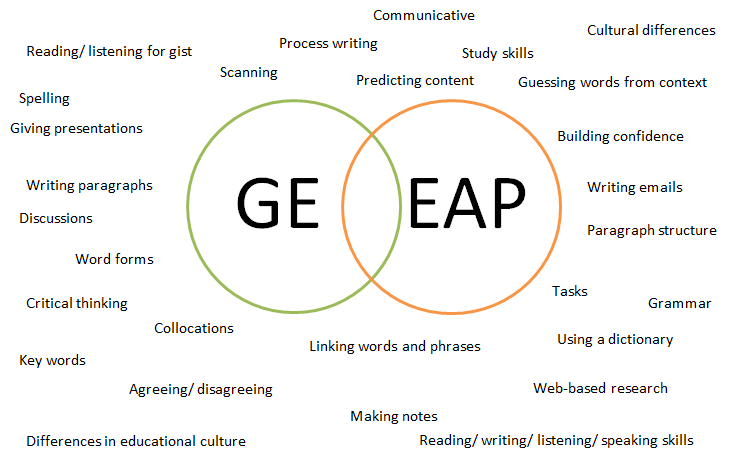 We’re helping to solve your EFL teaching problems by answering your questions every two weeks. This week, Stacey Hughes responds to Raef Sobh Azab’s blog comment about whether to focus on general English or EAP for low-level university students.
We’re helping to solve your EFL teaching problems by answering your questions every two weeks. This week, Stacey Hughes responds to Raef Sobh Azab’s blog comment about whether to focus on general English or EAP for low-level university students.
Raef wrote:
I teach English to university students at the English Department in a non-native English speaking country. My students lack the basic skills of the language. Their levels are beginner and/or elementary at best. My question is: what is the best and the most suitable choice for them? Is it general English because of its language input and real life context or EAP which is badly needed for their academic studies?”
Raef has posed a fundamental question, and I suspect that at the heart of it lies the distinction between General English (GE) and English for Academic Purposes (EAP). For one thing, where each is traditionally taught is different: EAP being taught primarily in university settings in pre-sessional or in-sessional courses. EAP is also different in its aims, which are to prepare students for not only the culture of academic study but also for the topics they will encounter and the types of tasks they will have to do. The GE or EAP question is similar to the GE or Business English (BE) question posed by BE teachers. Can and should students learn more specialist language before they have learned generic language?
The answer, I feel, lies in the purpose for learning English. If a student needs EAP, why would we spend time teaching them GE?
Though there are certainly important differences between GE and EAP, I wonder if, at lower levels at least, these differences are really that marked. Look at the words and phrases below. Where would you place each in the Venn Diagram below?

Did you find that the majority of the above could fit easily into either category? Did you find yourself saying, “It depends”?
I would hazard that, to some degree, all of the tasks, skills and activities listed above are features of both GE and EAP. What might differ is the degree to which each is taught. So, for example, a GE student might give a short presentation about cultural differences. The aims of the task might be to showcase the student’s fluency, accuracy and pronunciation. An EAP student might give a similar presentation on the differences in educational culture between his country and another. The aim may be slightly different, which would be reflected in the marking of the presentation. This student might be marked on body language, eye contact, clarity of visuals and how well the student was able to present ideas clearly, in addition to his fluency, accuracy and pronunciation.
Similarly, in writing tasks, both the GE and EAP student would be asked to write a paragraph or email and would be assessed on similar things – format, grammar, linking, topic sentences, vocabulary choice, etc. However, the EAP student might also be assessed on how well she links ideas together (text cohesion) and whether or not her ideas follow a logical progression (text coherence).
So, if we consider the aims of the activity or task, the focus changes slightly, but the task remains effectively the same. This suggests that EAP can be taught at a low level, and arguably should be in the scenario that Raef mentions above. If his students have little time to reach a certain level of proficiency, then keeping in mind the academic rationale for tasks and activities will help students build the skills they will need as their language level increases.
In his question, Raef mentions “real-life context” as a difference between GE and EAP, and it is in this topical aspect that we might find a split. Traditionally, EAP topics have tended to centre around academic subjects and be more “weighty” or serious, while GE topics have tended to be more generic and “lighter”. Choice of topic has dictated which vocabulary students learn, with EAP vocabulary being more formal and ‘academic’. However, at lower levels, this distinction is not as great as at higher levels.
Looking through a couple of low level EAP course books, I see vocabulary being taught that would happily sit in a GE course book – apartment, big, friendly, library, mathematics, parents, teach, weather – as well as some vocabulary that is possibly more EAP specific – brain, gestures, poetry, organisation, research, survey. None of these ‘EAP’ words are greatly more difficult to learn than the ‘GE’ words.
The topics in these course books are not that different either, in that they are common topics that are accessible to lower-level students. Even so, there is one distinct difference: they have a more academic context – listening activities may be a short lecture, podcast or talk show involving an “expert”, and readings similarly present an authoritative “voice”. This sows the seeds for students thinking about source credibility and the need to question information while still studying the vocabulary for describing personality or communicating their reasons for their choice of holiday destination.
What about grammar? Grammar can be taught as usual, but within an academic context. Compare: Caroline studies hard at the university versus Robert plays tennis at the sports club. Each sentence shows good use of the present tense, though sentence A is possibly more “EAP”.
My feeling is that EAP is a suitable choice for Raef’s low-level academic students and may be a more efficient choice given their ultimate need for academic English.
Invitation to share your ideas
Do you have anything to add on the subject of whether teaching EAP to low-level students is appropriate? We’d love to hear from you! You can respond directly to this blog by leaving a comment below.
Please keep your challenges coming. The best way to let us know is by leaving a comment below or on the EFLproblems blog post. We will respond to your challenges in a blog every two weeks.


Reblogged this on hungarywolf.
Reblogged this on Chris Lima's Blog.
Through 40 years of EAP teaching, I have always believed that an EAP approach is better for students learning English in order to study, whatever their level. The list of needs in the diagram above encourages that belief, because it includes a lot of study skills, but I think it actually obscures the real issue, which is whether the teaching of grammar, vocabulary, punctuation and spelling is best done as EAP – which I think it is. An EAP approach to low-level grammar and vocabulary teaching would start, like all ESP, by identifying the most critical language in the target situation (what you analyse first – texts, functions, purposes, genres etc – is another question, but ultimately you have to know what language to teach). A list of priorities will result. It won’t be so different at low levels from the priorities of general English, but it will be EAP because of the way it was gathered. Then it has to be presented and practised with appropriate “academic” subject matter (“carrier content” in the words of Tony Dudley-Evans). That need not be boring – there are some very interesting facts and issues within academia.